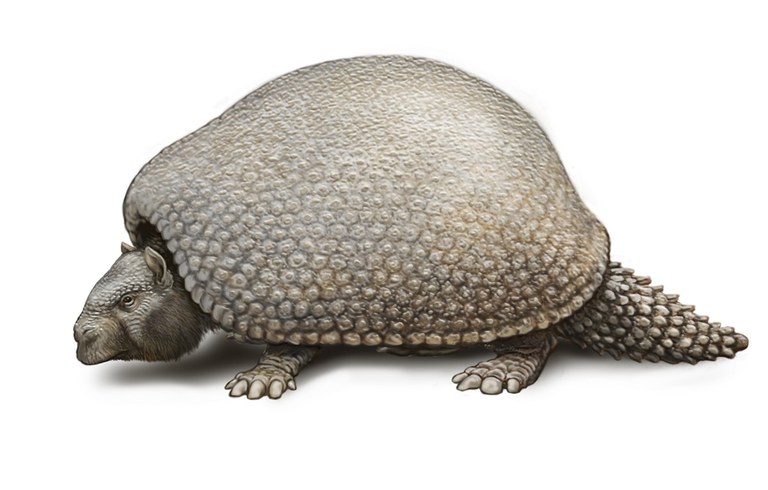The phylogenetic affinities of the extinct glyptodonts
Among the fossils of hitherto unknown mammals that Darwin collected in South America between 1832 and 1833 during the Beagle expedition were examples of the large, heavily armored herbivores later known as glyptodonts. Ever since, glyptodonts have fascinated evolutionary biologists because of their remarkable skeletal adaptations and seemingly isolated phylogenetic position even within their natural group, the cingulate xenarthrans (armadillos and their allies). In possessing a carapace comprised of fused osteoderms, the glyptodonts were clearly related to other cingulates, but their precise phylogenetic position as suggested by morphology remains unresolved.
Feb 22, 2016
Authors: Frédéric Delsuc, Gillian C. Gibb, Melanie Kuch, Guillaume Billet, Lionel Hautier, John Southon, Jean-Marie Rouillard, Juan Carlos Fernicola, Sergio F. Vizcaíno, Ross D.E. MacPhee, and Hendrik N. Poinar
Current Biology, Vol. 26, Issue 4, February 2016, pp. R155–R156
Abstract

Image Credit: Carl Buell
Among the fossils of hitherto unknown mammals that Darwin collected in South America between 1832 and 1833 during the Beagle expedition were examples of the large, heavily armored herbivores later known as glyptodonts. Ever since, glyptodonts have fascinated evolutionary biologists because of their remarkable skeletal adaptations and seemingly isolated phylogenetic position even within their natural group, the cingulate xenarthrans (armadillos and their allies). In possessing a carapace comprised of fused osteoderms, the glyptodonts were clearly related to other cingulates, but their precise phylogenetic position as suggested by morphology remains unresolved. To provide a molecular perspective on this issue, we designed sequence-capture baits using in silico reconstructed ancestral sequences and successfully assembled the complete mitochondrial genome of Doedicurus, one of the largest glyptodonts. Our phylogenetic reconstructions establish that glyptodonts are in fact deeply nested within the armadillo crown-group, representing a distinct subfamily (Glyptodontinae) within family Chlamyphoridae. Molecular dating suggests that glyptodonts diverged no earlier than around 35 million years ago, in good agreement with their fossil record. Our results highlight the derived nature of the glyptodont morphotype, one aspect of which is a spectacular increase in body size until their extinction at the end of the last ice age.
BBC Article and Video
CBC News Article
Toronto Star News Article
Live Science News Article